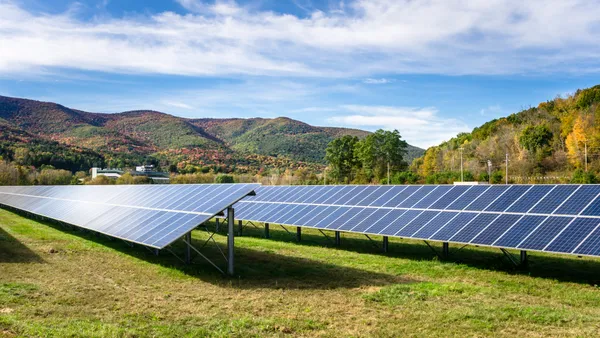Dive Brief:
- A record $71 billion was invested in U.S. clean energy and transportation in the third quarter of 2024, according to a Thursday report from research firm Rhodium Group. This represents a 12% increase year-over-year, and a 2% increase from Q2 of 2024, the report said.
- Clean energy investing also accounted for 5% of total U.S. private investment in structures, equipment and durable goods, up from 4.5% in Q3 of 2023, according to the report.
- Other than a slight dip in Q1 of this year, the sector has seen quarter-on-quarter growth since Q2 of 2021, and the latest quarter represents more than double the $34 billion invested at the time. Despite the growth, the nation is still off track to reach its 2030 emissions reduction targets.
Dive Insight:
While Rhodium’s latest Clean Investment Monitor report shows promising signs for the clean energy investment, it also said the U.S. clean energy transition is still falling short on both the nation’s Paris Agreement commitments and post-Inflation Reduction Act projections.
The U.S. agreed to slash its emissions in half by 2030 as part of the Paris Agreement in 2015; the passage of the IRA led to projections that the nation was on a pathway to cut 40% of emissions without further action. Rhodium said it analyzed projects still in the pipeline and — with both solar and wind projects underperforming prior projections — the U.S. transition is on track to reduce its emissions 30% from a 2005 baseline by 2030.
“While we expect a record-breaking surge of clean electricity capacity additions in 2024, and 2025 will likely be the second-highest year on record, the current pipeline of clean electricity projects does not translate to enough new capacity in 2025 to keep pace with decarbonization expectations,” the report said.
A separate report released by BloombergNEF earlier this year found that the U.S. energy transition is on track to correlate with an additional 2.6 degrees Celsius global temperature rise if the country doesn’t take “decisive action.” The outlook also estimated that to reach net-zero emissions by 2050, the U.S. will require a near-immediate, dramatic decrease in emissions from the power sector and will need to transition “every sector of the energy system … to fully carbon-free sources.”
Rhodium said the pipeline of new clean energy and transportation manufacturing investments slowed in the third quarter. The report found $5.8 billion in investments, measured by new manufacturing project announcements, which is a 9% decrease from 2024’s Q2 and a 62% decline from Q3 of 2023. The researchers said this “suggests that actual investment may fall in future quarters.”
Rhodium’s analysts track clean energy investment by manufacturing technologies that reduce greenhouse gas; clean energy production or industrial decarbonization; and retail purchases by businesses and individual households, per the report. Retail investments accounted for half of Q3’s total clean investments ($35 billion), which Rhodium said drove the quarter’s growth.
Clean investments in the retail segment were up 9% quarter-over-quarter and 11% year-over-year. Meanwhile, the $20 billion invested in energy and industry in the third quarter represented a 7% dip from 2024’s Q2 and a 6% decrease year-over-year. Rhodium tracked $16 billion manufacturing investments for Q3, which stayed flat quarter-over-quarter but represented a 57% increase year-over year.
The U.S. is currently on track to add an average of 32-36 gigawatts of new clean energy capacity annually between 2023 and 2025, according to the report. Rhodium said in order to reach a 40% reduction in greenhouse gas emissions, or more, by the end of the decade, the nation will need to double capacity additions between 2026-2028.
The researchers said the decline in expected capacity additions can be attributed to a variety of factors, including a faster-than-expected fall of natural gas prices which are currently expected to remain low through 2025. This increases the economic appeal of natural gas, relative to clean energy technologies, according to the report. Additionally, the report said siting and permitting challenges have slowed the development of wind and solar capacity.
“Policy interventions have the potential to address the latter permitting-related obstacles — whether at the federal level, through regional power market regulation, or in addressing state and local barriers to clean electricity construction,” the report said. “Such policy would enhance the likelihood that the IRA can fully deliver on its clean electricity deployment potential, even in the face of persistently low natural gas prices.”












